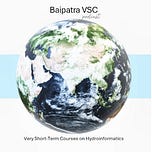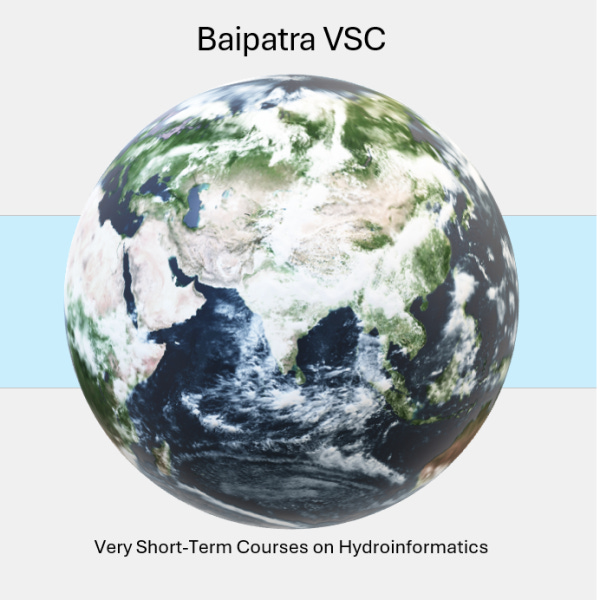Click here to Upgrade and access the above content for more than seven days. Free members can access the content only for seven days after publication.
If you want to pay in INR then do so by clicking here
Sundarbans National Park is a large coastal mangrove forest shared by India and Bangladesh. The area is home to the Royal Bengal tiger and other endangered species, such as the estuarine crocodile and Ganges River dolphin.
Why Sunderbans is so famous?
The highly endangered endemic river terrapin (Batagur baska), estuary crocodiles, Ganges and Irawadi dolphins, and the Royal Bengal Tiger are among the globally threatened species that depend on the Sundarbans. It is the sole mangrove habitat for the Panthera tigris tigris species worldwide. It was once considered as one of the Wonders of the list of Seven Wonders of the World which is maintained by UNESCO.
What are the major environmental issues faced by the Sunderbans presently?
The major environmental issues facing the Sundarbans include climate change, which leads to rising sea levels and increased salinity, coastal erosion, the loss of mangrove forests due to overexploitation, pollution from industrial waste and human activities, unsustainable resource extraction like fishing and honey collection, and the threat of invasive species. These issues significantly impact the region's unique biodiversity and threaten the livelihoods of local communities.
The Sundarbans mangrove forest is vulnerable to cyclones, storm surges, floods, salinity intrusion, shoreline erosion, sea-level rise, environmental pollution, deforestation, land degradation, loss of connectivity with upstream rivers, tidal asymmetry, waterlogging, eutrophication, and habitat destruction. The low-lying islands and flat topography of the Sundarbans delta make it susceptible to frequent floods and erosion. The coastal districts near the Sundarbans are also vulnerable to erosion and coastal inundation. Sea-level rise severely affects coastal regions, deltas, and estuaries, increasing vulnerability along exposed low-lying areas. Environmental pollution affects coastal districts, and the Matla Estuary faces massive anthropogenic stressors, including heavy sedimentation, pollution, over-exploitation, encroachment, and habitat degradation. The Indian Sundarbans estuarine ecosystem is threatened by eutrophication and habitat destruction.
Seven major environmental vulnerabilities that are currently plaguing the famous Sunderban ecosystems and its precious wildlife; The infamous Royal Bengal Tigers :
1) Cyclones, storm surges, and floods
Cyclones, storm surges, and floods pose significant problems in the Sundarban Delta due to its low-lying geography, making it highly vulnerable to coastal inundation, causing widespread damage to infrastructure, agriculture, and human life, particularly when combined with rising sea levels brought on by climate change; the impact is further amplified by the destruction of protective mangrove forests which act as a natural buffer against storm surges.
2)Sea-level rise
The coastal regions, deltas, and estuaries such as those in the Sundarbans are severely affected by sea level rise. Increasing relative sea level and tidal height increase vulnerability along exposed low-lying areas. The rise in sea level in the Sundarban Delta is causing significant problems by leading to frequent flooding, coastal erosion, increased salinity in the water, habitat loss for wildlife, particularly the Bengal tiger, and displacement of local communities due to the inundation of low-lying areas, making the region highly vulnerable to climate change impacts.
3)Waterlogging
Waterlogging is an environmental concern in the climatically vulnerable Indian Sundarbans. This type of phenomenon in the Sundarban Delta causes significant problems by inundating agricultural lands, leading to crop loss, impacting freshwater availability due to saltwater intrusion, hindering the growth of mangrove forests, and displacing local communities, primarily due to its low-lying geography and vulnerability to rising sea levels and heavy rainfall, exacerbated by climate change.
4)Salinity intrusion
Salinity intrusion in the Sunderban Delta is causing significant problems by impacting the mangrove ecosystem, affecting agriculture due to saline water inundation, threatening the local biodiversity, and impacting the livelihoods of people living in the region, primarily due to the dying off of the dominant Sundari mangrove trees which act as a natural barrier against saltwater intrusion, further exacerbated by rising sea levels and climate change.
5)Tidal asymmetry
The funnel shape and landward narrowing of channels in the Sundarbans contribute to tidal asymmetry, causing high tidal water to enter the estuary while low tidal water cannot properly pass out, damaging the bank line. Tidal asymmetry in the Sundarban Delta is causing problems primarily by creating a dominant flood tide, leading to excessive sediment deposition and land accretion in the delta, which results in shoreline erosion, island instability, and disruption of the delicate mangrove ecosystem due to uneven distribution of sediment across the delta, impacting both the ecology and human settlements in the region.
6)Land degradation
Land degradation in the Sundarban Delta is causing major problems by leading to coastal erosion, increased salinity due to sea level rise, loss of mangrove forests, displacement of local communities, and a decline in biodiversity, primarily impacting the fragile ecosystem that supports the endangered Bengal tiger and other wildlife due to shrinking habitats and disrupted food chains; this is largely driven by human activities like deforestation, unsustainable fishing practices, and climate change impacting the region's low-lying islands.
7)Deforestation
The Sundarbans, the world's largest mangrove forest, is experiencing deforestation due to several factors, including urban development, aquaculture, and overexploitation of resources. Due to the recent and burgeoning increase in tourist population, the entire delta is facing large-scale deforestation as well as conversion of land use. As an impact of this, the habitat of wildlife is receding which in turn is one of the major causes of human-animal conflicts.
How to mitigate?
The Sundarbans Delta faces several environmental challenges, including managing natural disasters, addressing coastal management and conservation, improving communication networks, and implementing Integrated Coastal Zone Management (ICZM). The region's vulnerability to cyclones, storm surges, and floods necessitates effective disaster management programs. The composite vulnerability model can help understand the complex nature of a coastal system, and ICZM can be improved by defining spatial scales and understanding physical, biological, and socio-economic challenges.
Erode management is crucial, with areas with high rainfall and erosivity requiring focused soil conservation efforts. Reforestation, sustainable agriculture, contour ploughing, and terracing are recommended to reduce erosion impacts. Mitigation plans and communication infrastructure are needed to cope with disasters, and community involvement is crucial.
Urban areas with high exposure levels should optimize urban planning to reduce ecological pressure caused by high-density populations and land expansion. Strengthening soil and water conservation, restoring vegetation, and establishing protective forests and ecological barriers are essential for minimizing soil erosion and degradation. Increased financial support, infrastructure improvements, and social and ecological response capabilities can bolster regional ecological resilience.
Click here to Upgrade and access the above content for more than seven days. Free members can access the content only for seven days after publication.
If you want to pay in INR then do so by clicking here
Click here to learn about Artificial Intelligence, Flood Prediction, Water Resource Management, and more. You can also promote and earn money selling educational products by becoming an affiliate of Innovate S, our digital shop. I understand that it's important to give young entrepreneurs the opportunity to promote their startups. Click here to learn more.
The information provided above is presented in the order in which it was received from the source. The application link and dates are the same as those that were provided by the source. Shared knowledge is based on what is received. the author of this post and HydroGeek are not liable for any liability or damage resulting from the use of this information. Additionally, our Terms and Conditions, Cancellation and Refund Policy as well as our Privacy Policy are presented here for your perusal. After taking into account the honorarium and the cost of maintenance, the amount that is obtained in exchange for the membership fee or through any other methods, if any, is then donated to non-profit organisations.
Festival Offers going on in AJIO (AD)
You may also like
To purchase 50 ideas for Starting a Business in US dollars: Click here
Simplify website creation with AI(AD)
Very Short-Term Course on Hydroinformatics
My YouTube Channel: Mrinmoy’s Views
Call for Paper for Virtual Forum on Water and Environment 2025
Lecture Notes on MCDM: Learn with Example 12 MCDM Techniques
Artificial Intelligence and its Application on Water Resource Development
Host and Earn(AD)






